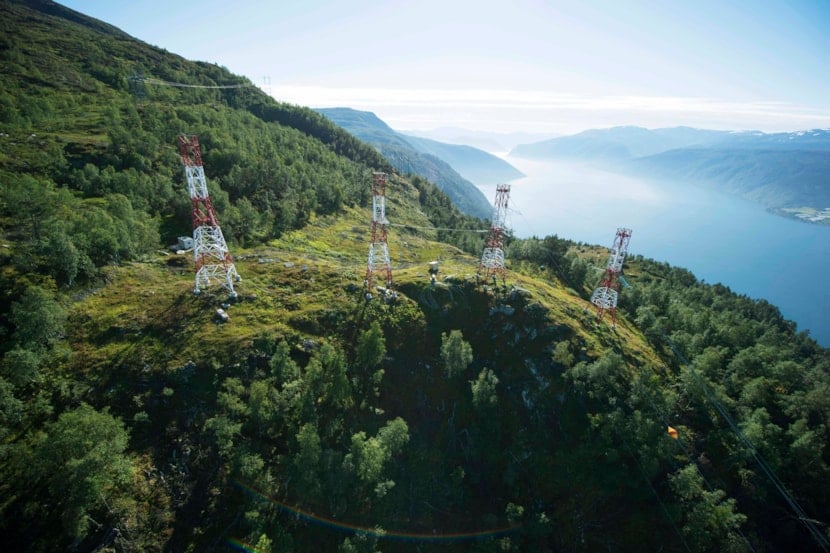Key numbers from 2023:
- 11 563 km power lines
- 39 149 pylons
- 236 substations
We will:
- Avoid construction in high-value and vulnerable natural areas
- Reduce our footprint and minimize construction i high-carbon areas
- Employ nature positive solutions
Arealstatistikk over infrastruktur i sårbar og verdifull natur
Statnett har utarbeidet en arealstatistikk med oversikt over infrastruktur i sårbar og verdifull natur. Dette gir oss en oversikt over hvor vi er i berøring med viktige naturtyper. Se full oversikt i årsrapporten for 2023.
|
Land use statistics of infrastructure in vulnerable and valuable nature1 |
Pylons |
Power line corridors2 |
Substations |
Subsea cables3 |
|
Number |
km2 |
km2 |
km2 |
|
|
Protected areas |
1 427 |
15 |
0.0074 |
2.6 |
|
Announced protected areas |
113 |
2 |
|
2.9 |
|
Very high environmental impact assessment value |
197 |
2 |
0.0900 |
|
|
High environmental impact assessment value |
376 |
5 |
0.0400 |
|
|
Very important, important and locally important marine areas |
|
|
|
27.6 |
|
Wild reindeer areas |
4 359 |
161 |
0.0600 |
|
1) We have considered presence, not actual impact in this analysis, and we have not considered whether our infrastructure was built before or after the establishment of the protected area and identification of natural assets
2) length multiplied by the average width of power line corridors, 40 metres.
3) In the Norwegian Exclusive Economic Zone
Mitigation hierarchy
The mitigation hierarchy is the basis for all project development in Statnett. This means that Statnett must avoid conflicts with nature if possible. If this is not possible, Statnett must limit, mitigate, restore and compensate any damage that may occur in connection with the work carried out.
Impact on nature
Flora
Power lines cause relatively little impact on vegetation, with the clearing of corridors and construction of pylons being the most intrusive interventions in the natural landscape. Only a small amount of land is directly occupied and in open landscapes any impact on the vegetation will be minor and local. In forested areas, however, the power lines will require felling of trees in the corridor.
This may affect thriving and threatened species both positively and negatively through changes in the habitat. The impact depends on the type of forest through which the power line passes, and the plant species in the area.
Fauna
Several bird species may be adversely impacted by Statnett’s infrastructure. Power lines can result in birds being injured or killed, either through electrocution or collision. Electrocution (from being in contact with two live wires at the same time) may impact larger birds, including eagle owls. Statnett’s power lines, however, have such a large distance between the live wires that this hazard is virtually negligible.
The likelihood of collision is linked to species-specific characteristics and behaviours, as well as the power line’s visibility and positioning in the terrain. Mitigating measures that increase visibility, such as bird deterrents on the overhead ground wire, can reduce conflicts. Power lines may also adversely impact birdlife by fragmenting the landscape and causing the loss of important ecological function areas.
With respect to other animals, conflicts with infrastructure have been documented particularly in relation to wild reindeer. Deciduous undergrowth in power line corridors can serve as important grazing areas for deer.
Did you know that Statnett restores nature where we are no longer needed?
In 2023, 36 kilometres of old power lines were decommissioned. The area underneath was restored. By removing pylons, sprucing up and removing concrete, and by using local topsoil, Statnett ensures faster regrowth.

